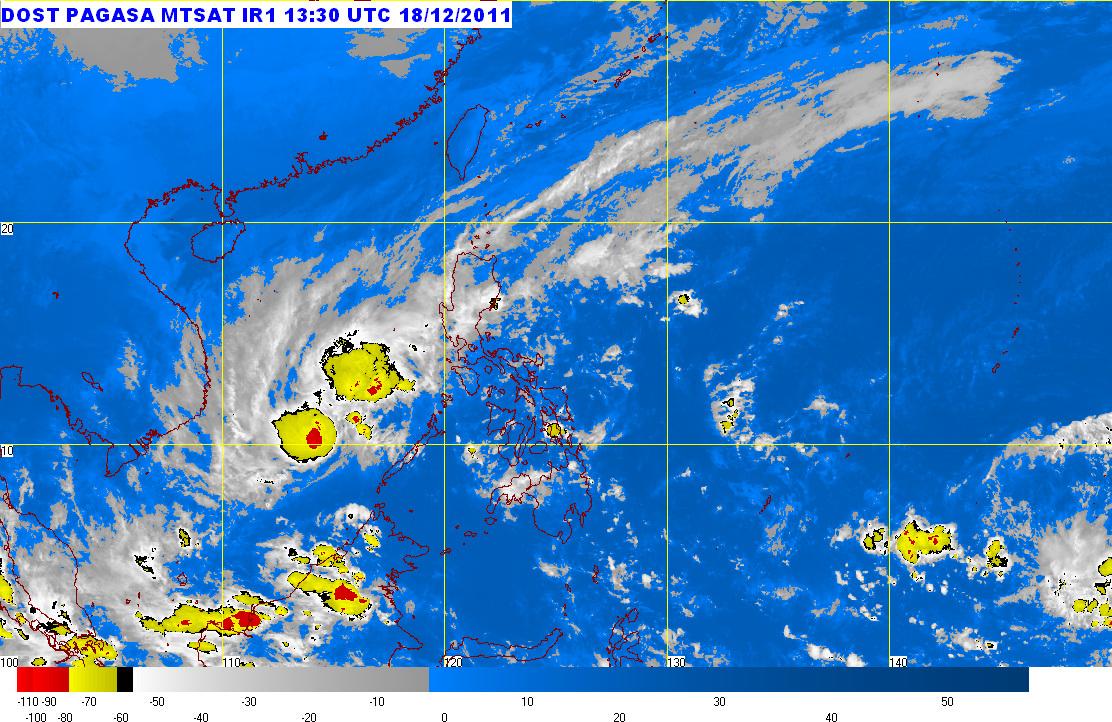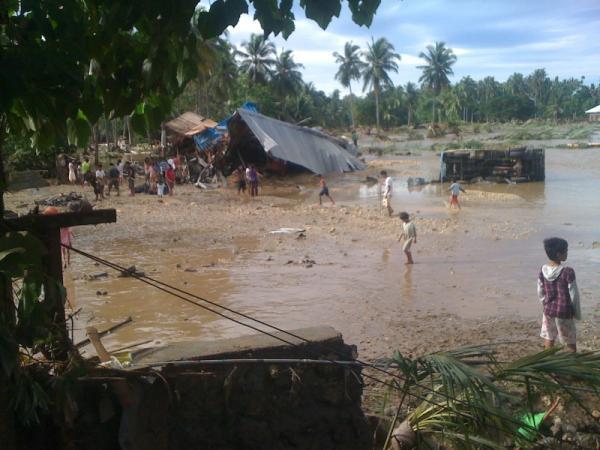Typhoon Sendong (Washi) washed away entire villages in south Philippines

Entire villages were washed away when tropical storm Sendong (Washi) whipped south Philippines in early hours of Saturday, leaving a trail of flattened homes, broken bridges and upended vehicles in the poverty-stricken country. Sendong killed more than 650 people in eight provinces in the southern Mindanao region, which is unused to typhoons. Rescuers are searching for more than 800 people missing. Flash floods and landslides swept houses into rivers and out to sea.
The cities of Cagayan de Oro and Iligan on the island of Mindanao were worst hit when typhoon hit shore late on Friday and early on Saturday, sending torrents of water and mud through villages and stripping mountainsides bare.
“This is the first time this has happened in our city,” Vicente Emano, mayor of Cagayan de Oro, said in a radio interview. He said officials in the area did not receive adequate warning before the typhoon struck.
The state disaster agency said adequate warnings had been given to officials and residents three days before the typhoon made landfall.
Disaster and health officials were struggling to deal with the scores of bodies that have been recovered. Some were stacked on top of each other in under-staffed mortuaries unable to cope with the number of dead.
The government and the Philippine National Red Cross appealed for help to feed, clothe and house more than 35,000 people huddled in evacuation centers as soldiers battled to recover bodies from the cloying mud.
Mindanao, the southernmost major island in the Philippines, is a mineral-rich region that also produces rice and corn but is not normally in the path of the average 20 typhoons that hit the south-east Asian country each year.

“This poses challenges to us … We need to educate people with this kind of change in climate,” Pang said. “The volume of rainfall for one month fell in just one day.”
As issued at 10:30h local time on Dec 18 Tropical storm Sendong has moved out of The Philippine Area of Responsibility.
Featured image credit Pagasa.

Thank you for this information btw 🙂
thanks for the information but i need more 🙂 please
[…] The Watchers – Typhoon Sendong (Washi) washed away entire villages in south Philippines. […]
I remember when I was young in Lupon, Davao Oriental, 1976. We were playing that beautiful afternoon. Then all of the sudden the sky turned black. Dust from the ground start whirling around, then heavy rain starts. We all went inside the house. There was a very strong wind and heavy rain and thunder storm. That went on overnight, but there was no flood.
Today, these calamities that are happening around the world are terrifying and it is happening frequently now. Philippines should equip themselves with better forecasting and warning devices. Disaster like this can be avoided.
PAGASA as the country weather watch and forecasting experts did issue warning to specific location in general terms, but because of the the advance technical capability of the Satellite imaging, the failure to provide specific typhoon path prediction became one in-efficiency in their duty.
Cloud formation and rain fall predictions should also be made and be more accurate to include the watershed drainage network in the specific location.
In the future, when this kind of more technical and advance forecast, people can be more prepared and initiate some vital preventive measures.
The damage had occur and irreversible, blaming the PAGASA would not be enough if we would act on this neglect they made today , but in the next event, when this calamity damage resulted in the failure to provide accurate prediction, a class suit would be appropriate for them for the loss of life and properties
AZZAD
Why is it called both Sendong and Washi?
Washi is its international name.
[…] Typhoon Sendong (Washi) washed away entire villages in south Philippines Environment — 18 December 2011 // Adonai The Watchers […]